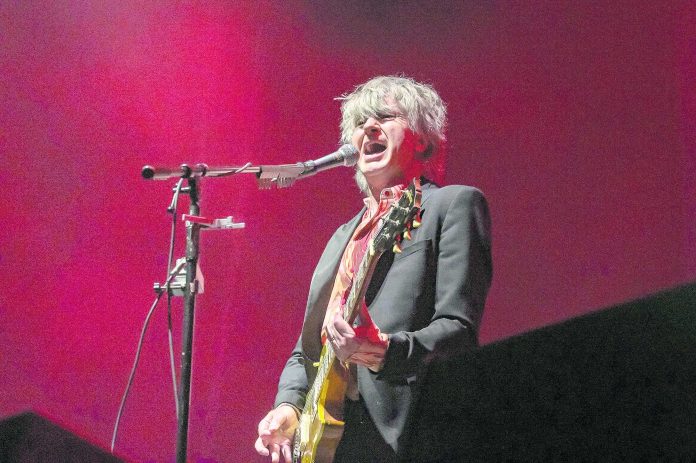
By DAVID BAUDER
AP Entertainment Writer
NEW YORK (AP) — Touring as a member of Fleetwood Mac in 2018-19 made Neil Finn appreciate the memorable band in his own history.
Two years later, Finn has brought that group, Crowded House, back to life with his sons Liam and Elroy, producer Mitchell Froom and original bass player Nick Seymour. A new album, “Dreamers Are Waiting,” arrives Friday.
“There’s a sense of occasion attached to that band, in my head, I suppose,” Finn, 63, said on a video call from his native New Zealand.
“Coming off of Fleetwood Mac, when we surprisingly had the opportunity to be part of a great, classic band, it reminded me of the gravitas and honor that comes with that,” the singer and songwriter said. “In the audience there were young people who had grown up with the songs, and were singing them as if they were just as current today as they were 30 years ago.”
One singalong included in the set was Finn’s “Don’t Dream It’s Over,” from the 1987 Crowded House debut that also produced the hit “Something So Strong.”
Crowded House never matched that early success in the United States but remained popular worldwide with songs like “Better Be Home Soon,” “Weather With You” and “Distant Sun.” They called it quits with a farewell concert outside the Sydney Opera House in 1996 that drew a crowd estimated around 200,000 people.
The band reconvened twice in the 2000s with Matt Sherrod replacing original drummer Paul Hester, who died in 2005.
Finn said Seymour and his sons were enthusiastic when he suggested trying again. Froom, who produced Crowded House’s first three albums, turned Finn down when he asked him to join in the late 1980s because he was pursuing a producing career. This time he was onboard.
“These three people have more to do with Crowded House, understand the ethos, the humor and the music, and have a natural intuition for it than anyone else on the planet,” Finn said.
Liam, a guitarist, and Elroy, a drummer, have their own independent music careers and have also worked with Neil before on projects, minimizing any awkwardness that comes from being in a band with dad.
The new Crowded House started recording new music in a Los Angeles studio, but the COVID-19 lockdown forced them to abandon the session before finishing. “Dreamers Are Waiting” was completed remotely.
“We were forced by circumstances to throw things in the air and reassemble them,” Finn said.
They chose the energetic cuts “Playing with Fire” and “Whatever You Want” to make videos and reintroduce Crowded House to the world, although the album’s heart is arguably revealed in a more moody middle, with songs “Start of Something” and “Too Good for This World.”
“Each of the five persons has deep connections to the origins of the band but are also brimming with ideas for how good it possibly could be,” he said. “That feels like a really good place for a band to be.”
The new Crowded House has also been able to experience something few other musical acts have over the past 15 months — an honest-to-goodness concert tour before packed arenas. They played a dozen gigs in New Zealand, where the smaller, island country was able to open things up more swiftly than elsewhere in the world.
At first, the band and audience members stared at each other, stunned. Maybe it was a year without live music, but it felt like five.
“We were determined to make the most of it,” Finn said. “We weren’t going to slip into that slightly errant behavior you get on tour — ‘Oh, where are we tonight?’ You can allow a little thing going wrong to spoil your whole night. We couldn’t afford to. We had 12 shows. We had to get over what went wrong instantly.”
It has left them eager to play more.
Finn’s time with Fleetwood Mac, where he and Tom Petty’s former guitarist, Mike Campbell, replaced Lindsey Buckingham, was “a glorious experience because I didn’t expect it.
“It’s good to be cast in a different role and not be the frontman for a change,” he said. “I really wanted to do a good job of playing and representing someone else’s music. It was good for me. It is a sometimes very insular and not always healthy experience to be obsessed with your own music.”
Any future with Fleetwood Mac, such as recording new material, was left open-ended, he said.
“It’s a big mountain to move to get everyone in the same frame of mind at the same time,” he said. “There’s a lot of work that goes into going from, ‘Yeah, that would be fun,’ to actually making it happen.”



















